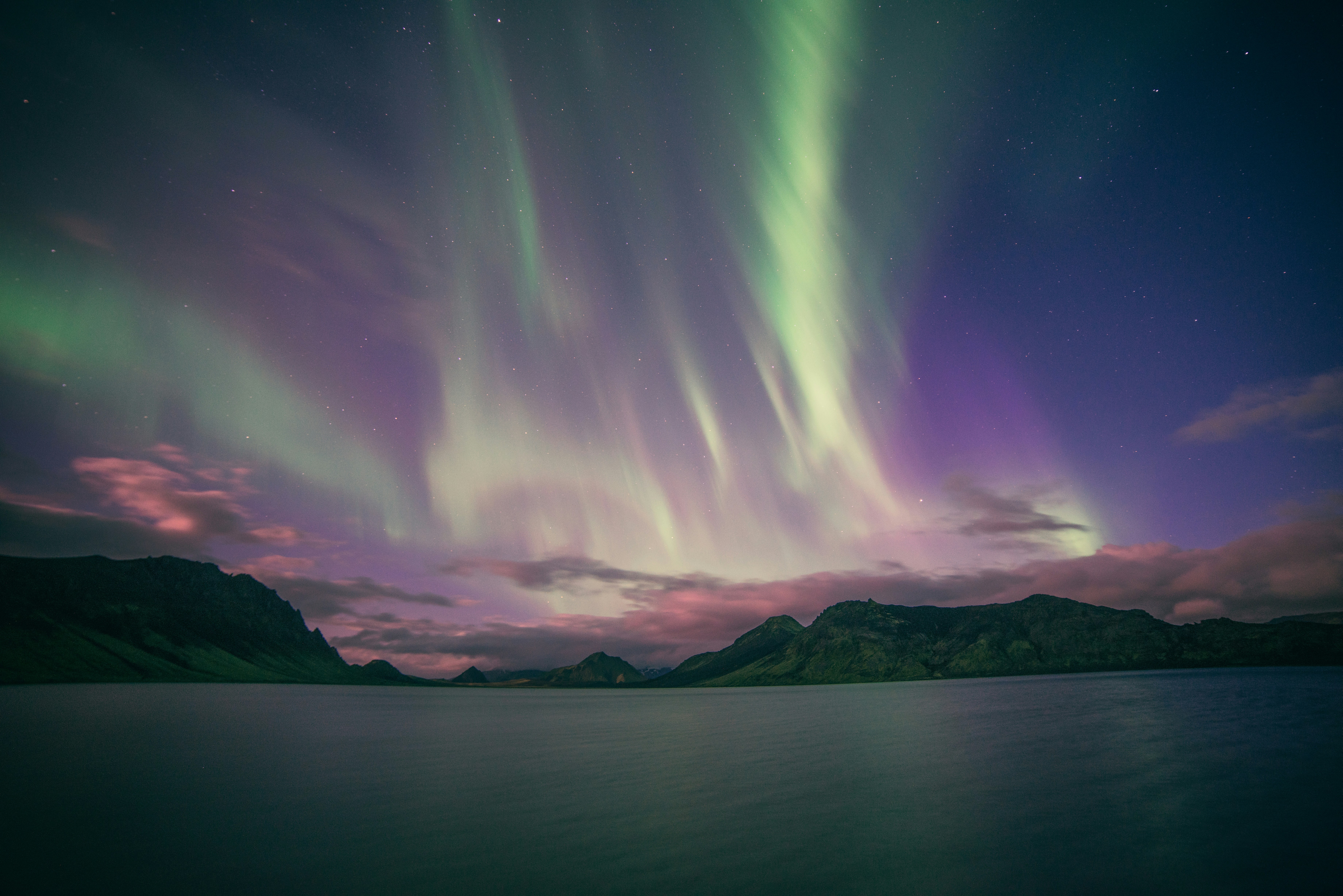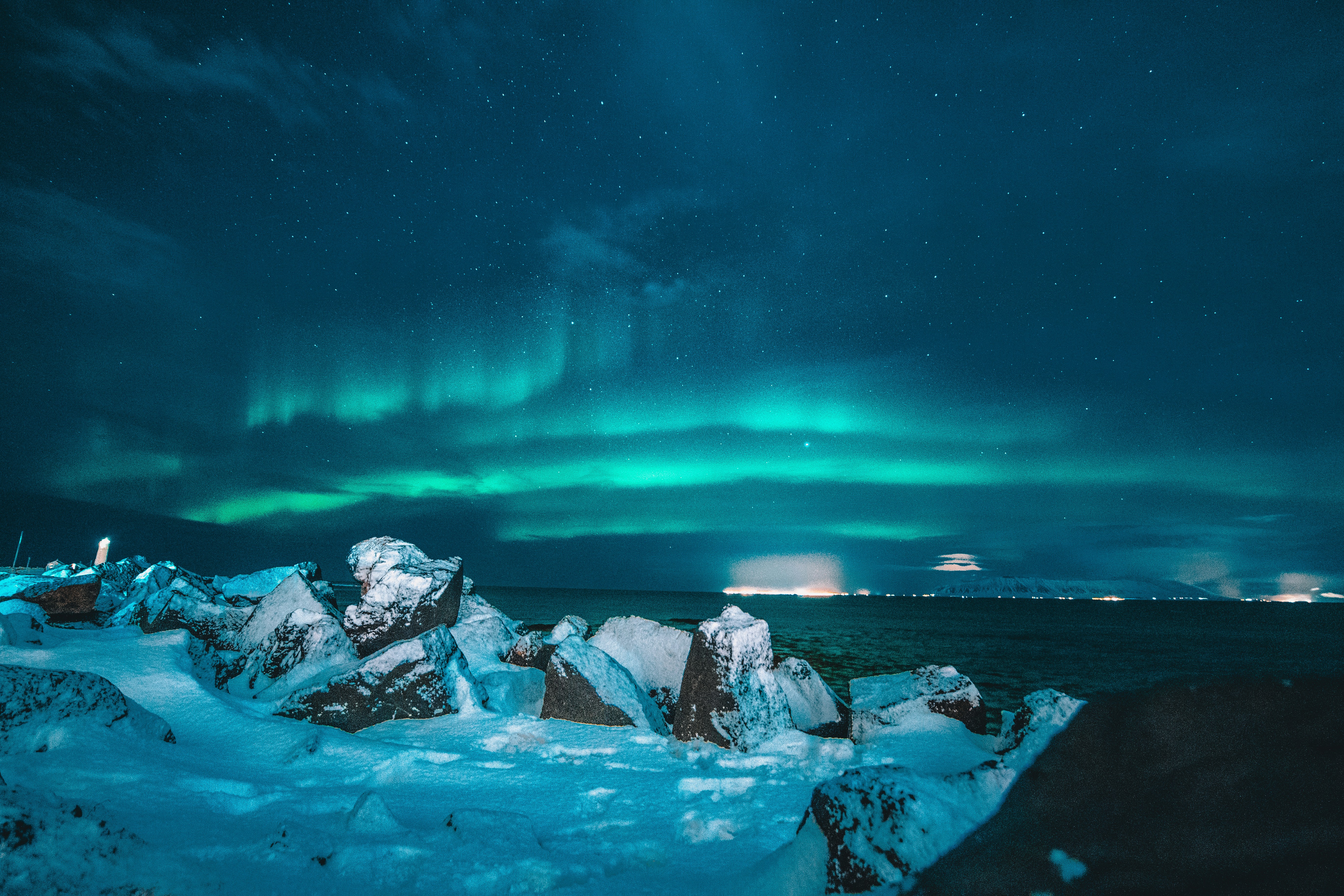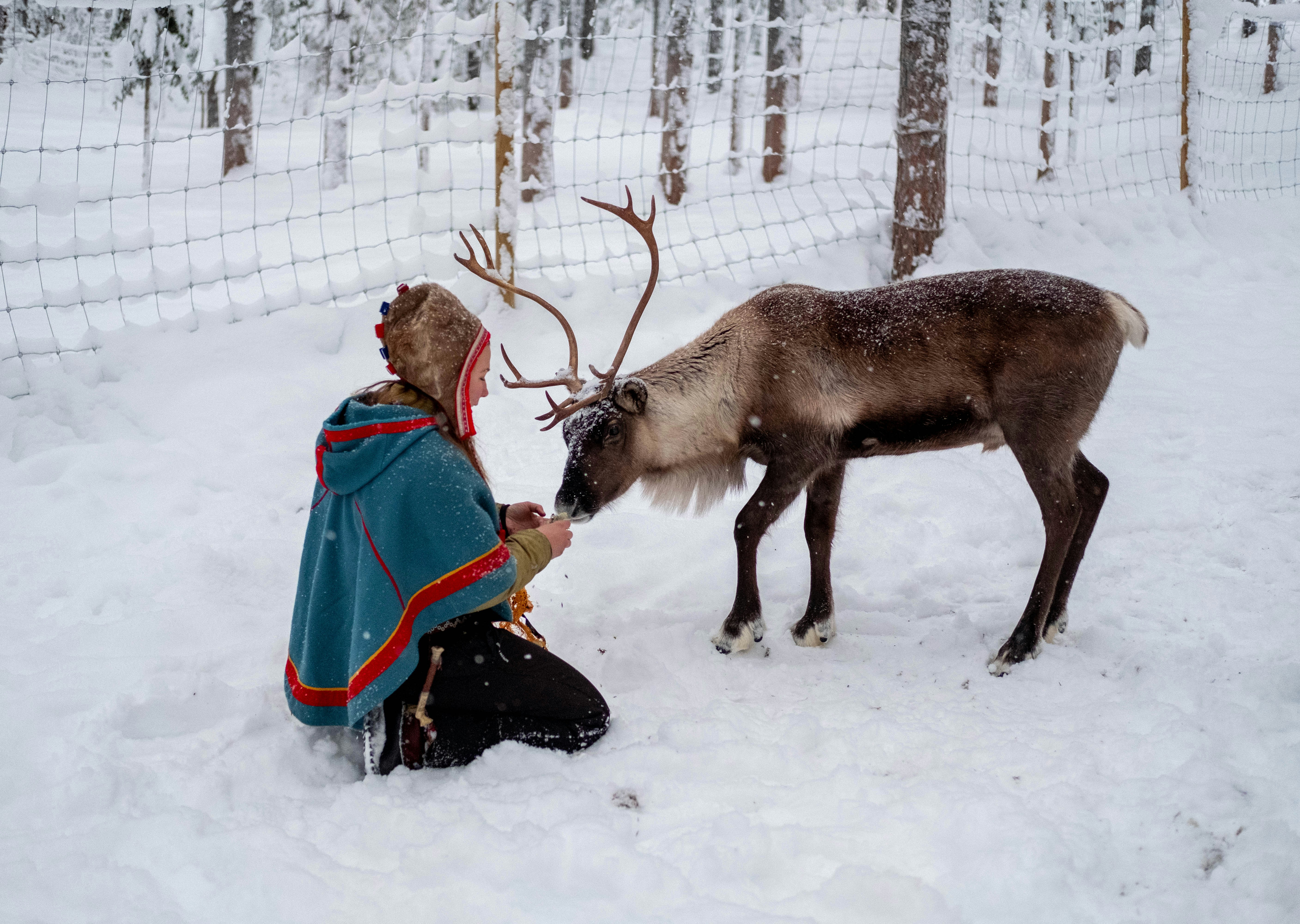Tromsø Weather Guide 2025: Arctic Climate, Best Times to Visit & Seasonal Activities
Complete Tromsø weather guide covering Arctic climate patterns, monthly conditions, packing lists, and optimal timing for northern lights, midnight sun, and outdoor adventures.
Tromsø Weather Guide 2025: Arctic Climate, Best Times to Visit & Seasonal Activities
Understanding Tromsø's unique Arctic climate is essential for planning the perfect Northern Norway adventure. This comprehensive weather guide covers year-round conditions, seasonal variations, and optimal timing for specific activities like northern lights viewing, midnight sun experiences, and outdoor adventures in the Arctic wilderness.
Understanding Tromsø's Arctic Climate
Geographic and Climatic Influences
Location Impact on Weather:
- Latitude: 69°39'N placing Tromsø well above the Arctic Circle
- Gulf Stream Effect: Maritime influence moderates temperatures significantly
- Coastal Position: Tromsøya island location affects precipitation patterns
- Mountain Barriers: Lyngen Alps influence local weather systems
- Polar Night: Complete darkness from November 21 - January 21
- Midnight Sun: Continuous daylight from May 19 - July 27
Climate Classification:
- Köppen Climate: Subarctic oceanic (Cfc) with maritime modifications
- Temperature Range: Milder than continental Arctic locations
- Precipitation: Moderate rainfall throughout year with winter snow
- Wind Patterns: Predominantly westerly winds from Atlantic systems
- Microclimate Variations: Significant differences between coast and inland areas
Annual Weather Patterns
Temperature Characteristics:
- Annual Average: 2.9°C (37°F) surprisingly mild for Arctic location
- Summer Highs: 12-16°C (54-61°F) with occasional 20°C+ days
- Winter Lows: -4 to -12°C (25-10°F) moderated by ocean influence
- Record Extremes: -18.4°C (-1°F) minimum, 30.2°C (86°F) maximum
- Thermal Comfort: Humidity and wind significantly affect perceived temperature
Precipitation Patterns:
- Annual Total: 1,029mm (40.5 inches) evenly distributed
- Wettest Months: September-January with Atlantic storm systems
- Snow Season: October-May with variable accumulation
- Driest Period: April-June during transition to summer
- Rain vs Snow: Temperature determines precipitation type
Month-by-Month Weather Breakdown
Winter Months (December-February)
December Weather in Tromsø:
- Average Temperature: -4°C (25°F) high, -9°C (16°F) low
- Daylight: Polar night begins December 21, complete darkness until January 21
- Precipitation: 101mm, mostly snow with occasional rain
- Conditions: Stable high-pressure systems bring clear skies
- Activities: Prime northern lights season, winter sports, Christmas markets
- Clothing: Arctic winter gear essential, layering system recommended
January Weather Patterns:
- Temperature Range: -6°C to -12°C (21-10°F) coldest month
- Polar Night: Complete darkness with civil twilight around midday
- Snow Conditions: Excellent for skiing, snowmobiling, dog sledding
- Aurora Activity: Peak northern lights viewing with darkest skies
- Weather Stability: High-pressure systems create clear, cold conditions
- Tourist Season: Peak aurora tourism with highest accommodation rates
February Climate:
- Temperature: -4°C to -9°C (25-16°F) slight warming trend begins
- Daylight Return: Sunrise returns February 21, extending daily
- Precipitation: 84mm with decreasing snow accumulation
- Activities: Continued winter sports, Sami culture festivals
- Aurora Season: Excellent northern lights with increasing daylight balance
- Weather Variability: More frequent weather changes as spring approaches
Spring Transition (March-May)
March Weather Dynamics:
- Temperature: 0°C to -6°C (32-21°F) crossing freezing point
- Daylight: Rapid increase from 9 to 15 hours of daylight
- Snow Conditions: Peak accumulation before spring melt begins
- Activities: Last chance for winter sports, aurora viewing continues
- Weather Patterns: Increasing variability with Atlantic influences
- Road Conditions: Still requiring winter tires and driving precautions
April Spring Awakening:
- Temperature Range: 4°C to -2°C (39-28°F) above freezing days common
- Precipitation: 84mm with rain-snow mix becoming frequent
- Daylight Hours: 17-20 hours with bright Arctic spring light
- Snow Melt: Significant melting in coastal areas, mountains retain snow
- Activities: Transition from winter to summer activities
- Photography: Excellent lighting for landscape photography
May Early Summer:
- Temperatures: 9°C to 2°C (48-36°F) pleasant spring conditions
- Midnight Sun Approach: 24-hour daylight begins May 19
- Precipitation: 61mm with predominantly rain
- Nature: Arctic flora begins blooming, wildlife activity increases
- Outdoor Access: Hiking trails at lower elevations become accessible
- Tourist Season: Shoulder season with moderate prices and good weather
Summer Season (June-August)
June Midnight Sun Glory:
- Temperature: 14°C to 7°C (57-45°F) ideal outdoor conditions
- Daylight: Complete 24-hour daylight, midnight sun period
- Precipitation: 67mm, light rain and occasional drizzle
- Activities: Hiking, kayaking, fishing, midnight sun tours
- Tourism: Increasing visitor numbers, higher accommodation rates
- Natural Phenomena: White nights with spectacular golden-hour lighting
July Peak Summer:
- Warmest Month: 16°C to 9°C (61-48°F) most comfortable temperatures
- Weather Stability: Generally stable with occasional rain showers
- Precipitation: 76mm with brief but intense summer storms
- Outdoor Activities: Peak hiking, camping, and adventure sports season
- Tourism: Highest visitor numbers and accommodation prices
- Midnight Sun: Continues until July 27, then gradual sunset return
August Summer's End:
- Temperature: 14°C to 7°C (57-45°F) slight cooling begins
- Daylight: Sunset returns August 21, normal day-night cycle resumes
- Precipitation: 85mm with increasing autumn storm systems
- Activities: Continued summer activities with autumn color photography
- Aurora Return: Northern lights become visible again after midnight sun
- Shoulder Season: Tourist numbers decrease, better accommodation value
Autumn Transition (September-November)
September Autumn Colors:
- Temperature: 10°C to 4°C (50-39°F) pleasant but cooling
- Daylight: 12-15 hours with beautiful autumn light
- Precipitation: 121mm as Atlantic storm systems increase
- Foliage: Spectacular autumn colors in Arctic vegetation
- Activities: Aurora season begins, hiking continues, photography excellent
- Tourism: Shoulder season with good weather and moderate prices
October Northern Lights Return:
- Temperature: 4°C to -1°C (39-30°F) first frost and snow possible
- Aurora Season: Northern lights become reliably visible
- Precipitation: 143mm with rain-snow transition
- Daylight: 6-12 hours providing aurora viewing darkness
- Activities: Prime aurora photography, winter preparation
- Weather: Variable conditions requiring flexible planning
November Winter Preparation:
- Temperature: -1°C to -6°C (30-21°F) winter weather established
- Polar Night Approach: Decreasing to 2-6 hours of daylight
- Precipitation: 103mm predominantly snow
- Aurora Peak: Excellent northern lights viewing conditions
- Winter Sports: Skiing and snow activities begin
- Tourism: Pre-winter rates before peak aurora season
Weather and Northern Lights Viewing
Optimal Aurora Weather Conditions
Clear Sky Requirements:
- Cloud Cover: Less than 3/8 sky coverage for aurora visibility
- Precipitation: Dry conditions essential for northern lights photography
- Atmospheric Pressure: High-pressure systems bring stable, clear weather
- Wind Patterns: Calm conditions prevent atmospheric turbulence
- Temperature Inversion: Cold air masses often coincide with clear skies
Forecasting Aurora Weather:
- Meteorological Services: Yr.no provides detailed cloud cover predictions
- Satellite Imagery: Real-time cloud movement analysis
- Local Indicators: Star visibility predicts aurora viewing potential
- Professional Services: Aurora tour operators monitor conditions continuously
- Mobile Apps: Aurora alerts combine weather and geomagnetic data
Weather-Related Aurora Success Rates
Monthly Clear Sky Statistics:
- December-January: 45-55% clear nights during polar night
- February-March: 40-50% clear conditions with increasing daylight
- October-November: 35-45% clear skies with autumn storm activity
- September: 30-40% clear nights as aurora season begins
Weather Pattern Recognition:
- High Pressure Systems: 3-7 day periods of excellent aurora weather
- Storm Clearance: Post-storm conditions often bring exceptional clarity
- Temperature Drops: Cold snaps frequently coincide with clear skies
- Wind Direction: Easterly winds often indicate stable weather approaching
Seasonal Activity Planning by Weather
Winter Activities (December-March)
Optimal Weather Windows:
- Dog Sledding: Best in stable cold conditions -5 to -15°C
- Snowmobiling: Requires good snow base and clear visibility
- Cross-Country Skiing: Ideal in light snow or clear conditions
- Ice Fishing: Safe ice requires consistent sub-zero temperatures
- Aurora Photography: Clear, calm nights with minimal wind
Weather Challenges:
- Extreme Cold: Below -20°C limits outdoor exposure time
- Heavy Snow: May cancel tours and limit road access
- Strong Winds: Create dangerous windchill and poor visibility
- Rain Events: Rare but disruptive to winter activities
Summer Activities (June-August)
Weather-Dependent Adventures:
- Hiking: Best in dry conditions with moderate temperatures
- Sea Kayaking: Requires calm seas and minimal wind
- Fishing Tours: Weather windows between storm systems
- Midnight Sun Tours: Any weather offers unique photographic opportunities
- Camping: Needs dry conditions and wind protection
Weather Considerations:
- Rain Preparation: Waterproof gear essential for all outdoor activities
- Temperature Fluctuations: Layered clothing system recommended
- UV Exposure: Strong sun reflection from snow and water
- Insect Activity: Warm, calm conditions increase mosquito populations
What to Pack for Tromsø Weather
Essential Clothing by Season
Winter Clothing (November-March):
- Base Layers: Merino wool or synthetic moisture-wicking materials
- Insulation: Down or synthetic filled jackets and pants
- Outer Shell: Waterproof, windproof jacket and pants
- Extremities: Insulated boots, waterproof gloves, warm hat
- Emergency: Hand warmers, spare gloves, face protection
Summer Clothing (June-August):
- Layering System: T-shirts to fleece for temperature variations
- Rain Protection: Lightweight waterproof jacket and pants
- Footwear: Waterproof hiking boots and casual shoes
- Sun Protection: Sunglasses, hat, and SPF 30+ sunscreen
- Insect Protection: Long sleeves and pants for mosquito areas
Weather-Specific Gear
Photography Equipment:
- Camera Protection: Waterproof cases and lens cloths
- Battery Management: Cold weather drain requires multiple spares
- Tripod Stability: Carbon fiber performs better in temperature extremes
- Lens Warmers: Prevent condensation during temperature changes
Outdoor Activity Gear:
- Footwear: Microspikes for icy conditions year-round
- Navigation: GPS devices with weather resistance
- Emergency Communication: Satellite communicators for remote areas
- First Aid: Hypothermia treatment and altitude considerations
Weather Resources and Planning Tools
Official Weather Services
Norwegian Meteorological Institute (MET):
- Yr.no: Most accurate local forecasts with hourly updates
- Storm Warnings: Official severe weather alerts and advisories
- Marine Forecasts: Essential for coastal and water activities
- Avalanche Bulletins: Mountain safety information
- Climate Data: Historical weather patterns and statistics
International Weather Services:
- Weather Underground: Crowd-sourced observations and forecasts
- AccuWeather: Detailed long-range forecasting
- Weather.com: Comprehensive weather information and radar
- Mountain-forecast.com: Specialized mountain weather predictions
Planning Your Visit
Optimal Timing by Interest:
- Northern Lights: October 15 - March 15 for best viewing conditions
- Midnight Sun: May 19 - July 27 for continuous daylight
- Hiking/Outdoor: June - September for accessible trails and moderate weather
- Photography: March-April and September-October for best light conditions
- Budget Travel: April-May and September-October for shoulder season rates
Weather-Flexible Itinerary Tips:
- Multi-Day Plans: Build in weather days for rescheduling activities
- Indoor Alternatives: Museums, cultural sites, and spa visits for bad weather
- Local Guidance: Hotel concierges and tour operators monitor conditions
- Booking Flexibility: Choose cancellable reservations when possible
- Real-Time Adaptation: Monitor forecasts and adjust plans accordingly
Understanding Tromsø's Arctic weather patterns enables you to plan the perfect visit regardless of season. Whether chasing northern lights in winter's darkness or hiking under the midnight sun, proper weather preparation ensures your Arctic adventure becomes an unforgettable experience filled with natural wonders and outdoor excitement.


